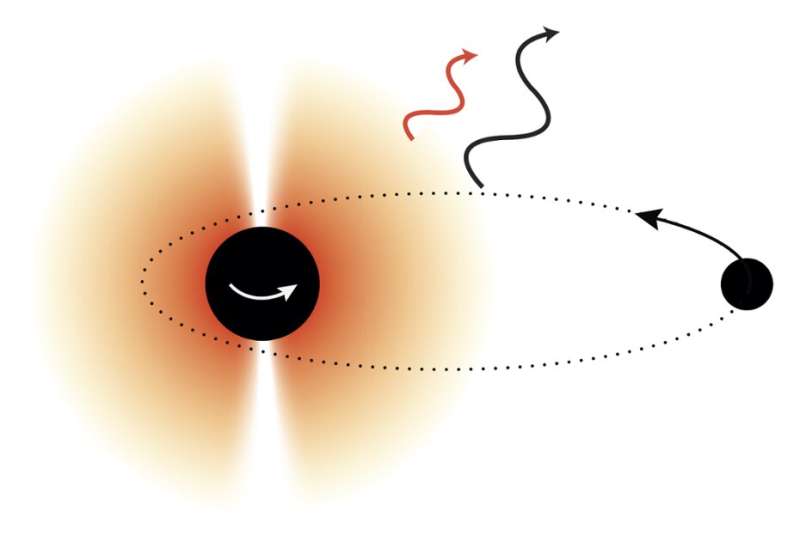Discovering new particles using black holes

Some theories that go beyond the Standard Model of particle physics predict the existence of new ultralight particles, with masses far below the lightest known particles in nature. These particles have such very weak interactions with ordinary matter that they are hard to detect via particle colliders and dark matter detectors. However, according to a new paper by physicists Daniel Baumann and Horng Sheng Chia from the University of Amsterdam (UvA), together with Rafael Porto from DESY (Hamburg), such particles could be detectable in gravitational wave signals originating from merging black holes. The research was published in Physical Review D this week.
Nature consists of two types of particles: fermions, the type of particle that makes up solid matter, and bosons, the type of particle that can propagate interactions. Ultralight bosons can form large condensates around rapidly rotating black holes through a process called superradiance. A black hole carrying such a boson cloud is sometimes called a "gravitational atom," because its configuration closely resembles the proton-electron structure in a hydrogen atom, but at a much larger scale. For example, just like the electron in the hydrogen atom, the boson cloud around a black hole can exist in a number of different states, each with a particular energy.
Fingerprint
In the case of the hydrogen atom, transitions between these different energy levels can be induced by shining a laser onto the atom. When the energy of the laser is exactly right, the electron can jump from one state to another. A similar effect can happen for the gravitational atom if it is part of a pair of black holes orbiting one another. In that case, the gravitational influence of the second black hole will play the role of the laser and induce transitions between the energy states of the boson cloud.
In recent years, physicists have been able to measure gravitational waves – ripples in the gravitational field – that occur when pairs of black holes violently merge into a single one. As Baumann, Chia and Porto now show, the presence of energy level transitions in the hypothetical boson cloud would induce a characteristic 'fingerprint' in the gravitational wave signals produced by such merging black holes. Observing such a fingerprint would be an important test for theories that predict ultralight bosonic particles. While current gravitational wave observations aren't yet sensitive enough to observe the effect, this will certainly become an important target of future experiments.
More information: Probing Ultralight Bosons with Binary Black Holes. arxiv.org/abs/1804.03208
Journal information: Physical Review D
Provided by University of Amsterdam





















